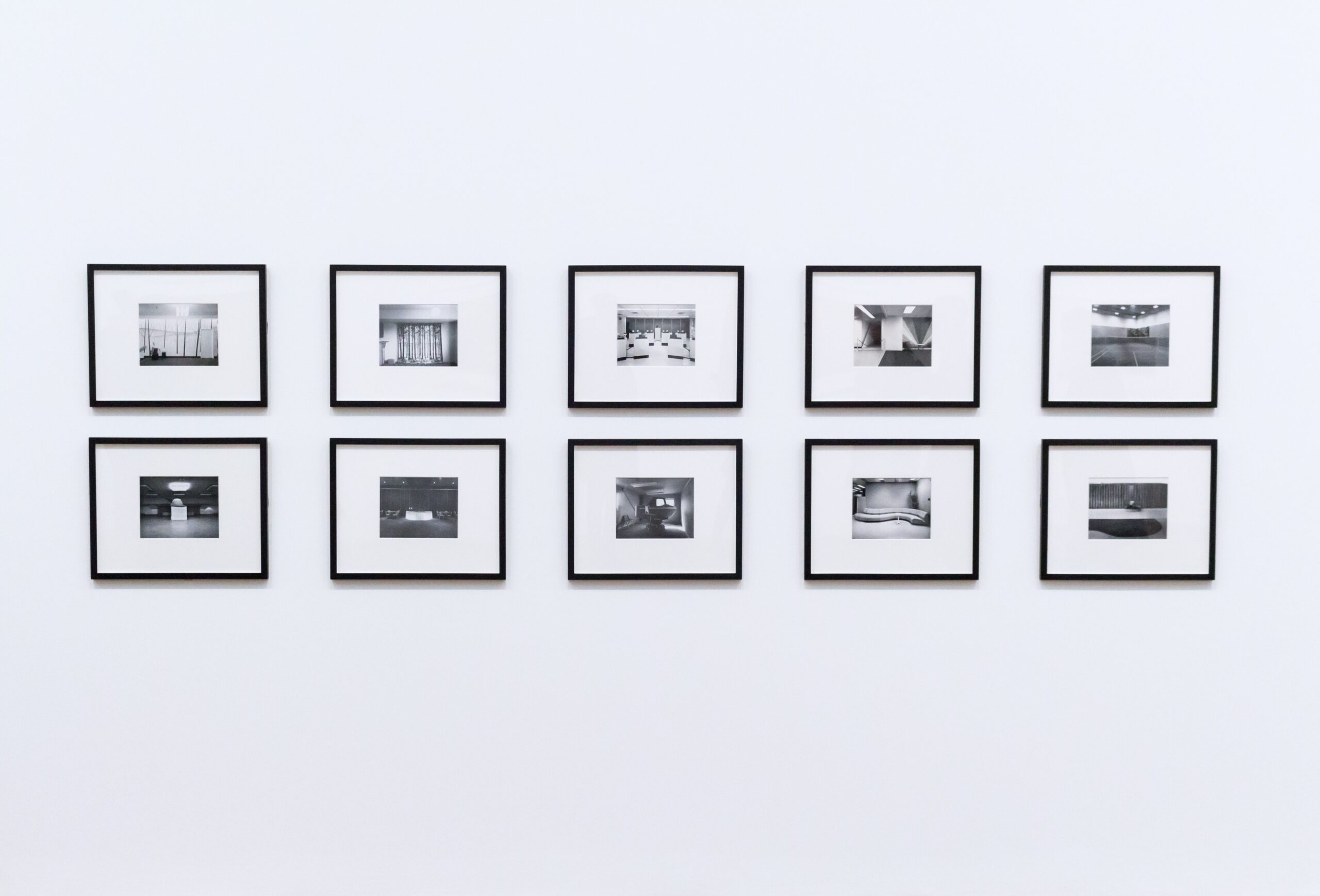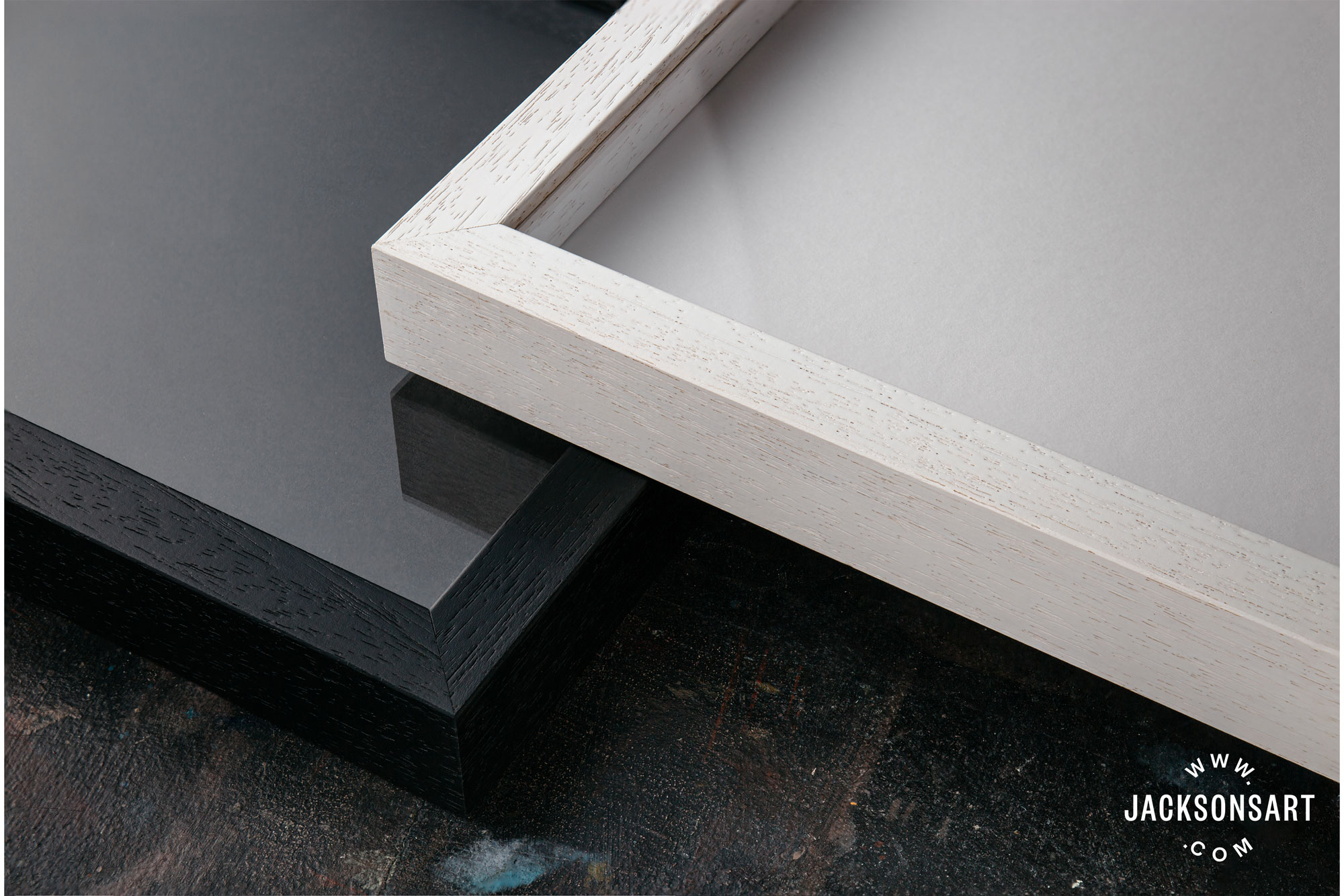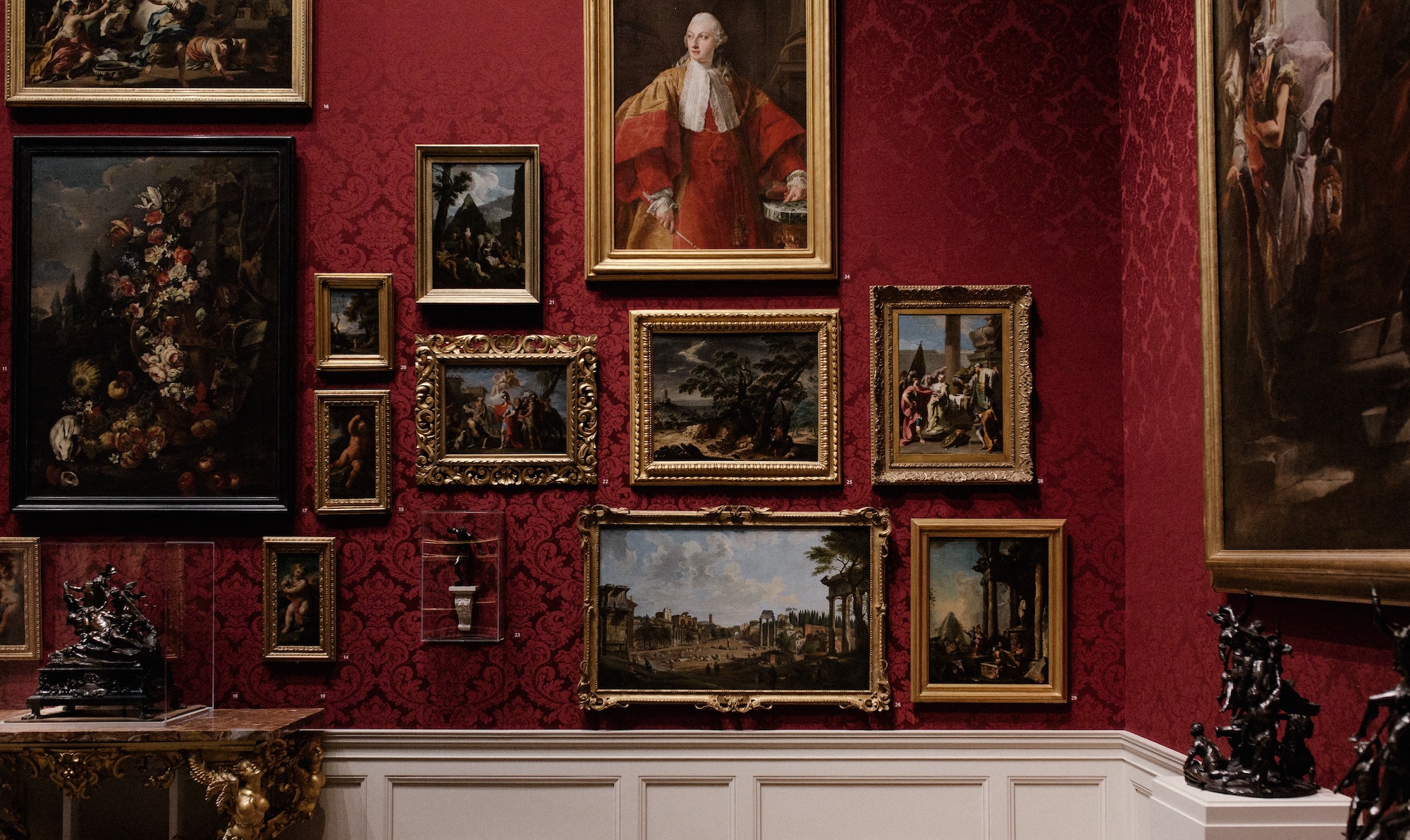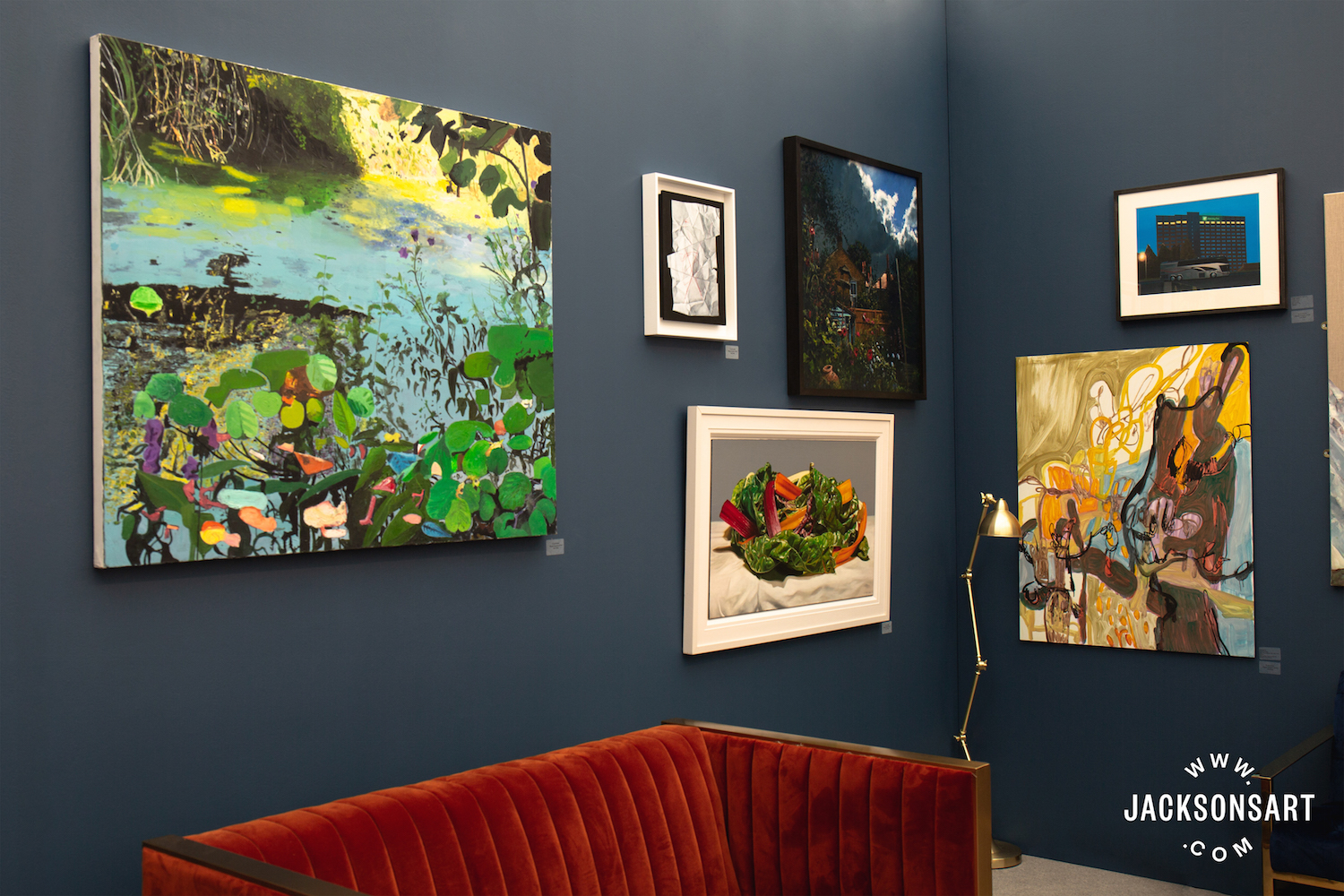What Type or Color of Frames Do Art Galleries Prefer in Exhibitions?
There are a number of points to consider when framing artwork. The purpose of a frame should be to focus the attending on the artwork, as well equally protect information technology from environmental factors that could affect its appearance over time. Framing is an art in itself and choosing the right one can greatly enhance an artwork.
Apart from a frame'southward artful features, it's of import to consider the medium the work is painted in and the support it's painted on. Understanding their properties will assistance you adjust for factors that may impact the artwork if not framed correctly. Hither are some points to have into consideration when choosing the correct frame.
Fabric, Color, and Style
Frames are available in many varieties, significant there's plenty of choice to ensure the frame complements the artwork. If framed incorrectly, a frame might overpower the artwork or lack in giving it the presence it deserves. While it's of import to choice a frame that is less centre-catching than your artwork, frames besides similar in colour to the artwork, or as decorated in terms of decoration, should too be avoided. Call back how a frame tin can present the work well-nigh effectively – for case, adding contrast with a night frame on a low-cal painting tin brand the artwork stand up out.

Where the artwork will be displayed is an important consideration, but for the best outcome choose the all-time frame for the artwork, instead of matching it to another frame.
The mode of a painting will help to suggest the frame style. For instance, paintings with a classical subject matter are well suited to a traditional gold-leafed frame, or an bonny dark woods frame. Lighter or more abstract paintings normally look best in less ornate frames, such as a box frame with a thin edge. For paintings with a subject field matter somewhere in between, you could choose a frame that combines traditional and gimmicky styles.
If you're unsure about adding colour with a frame, black or white are ever good choices. Both work well with most interiors and subject matters – unproblematic blackness frames can add depth and drama, and white frames work well with bright coloured works and white walls.

Framing Works on Paper
A frame for a piece of work on paper should protect the artwork as well as drawing attending to its advent. Works made with mediums such as graphite, charcoal or pastel are more delicate and require care when treatment and framing. Watercolour paintings on paper can also be fragile. These artworks usually look best when framed with a mountain, or 'mat'. Acid-free mounts and backings volition help protect the work from deterioration – the materials used should exist 100% acid-free. About good framers employ these materials.
The mountain helps highlight the artwork by separating it from the frame and drawing attending to the work. They also aid conserve fragile artworks past ensuring that the glass doesn't touch the artwork directly. This can cause condensation and damage to the paper as mould and mildew can form.
A mount isn't necessary, but most artworks on paper look better with one, providing a more elegant finish. Some works on paper are 'floated' over the mat, in which case a framer volition employ conservation quality materials to protect the back of the artwork.

The print has been floated in the frame by a plinth, drawing attending to the paper and fabric aspects of the work.
Beautiful Girl II, 2011, Carving past Tracey Emin
© Thou Art In Hampstead Ltd
Neutral coloured mounts tend to exist the most popular, although other colours can add an interesting dimension to an artwork. If you want to innovate subtle colour, consider double matting. A coloured mat is placed beneath the neutral mat, and the windows of the two mats are cutting so simply about 1/4 in of colour is shown. Artworks can too be framed with a 'liner' – commonly a piece of wood that acts like a separate inner frame, which is slotted under the rebate effectually the inner edge of the frame.
It'due south also of import to make certain the glass has a UV filter. This plays a primal role in protecting works that will fade over fourth dimension if exposed to UV calorie-free. Low-reflective types of glass are best as they exercise not interfere when viewing the artwork. Acrylic glazing, sometimes known as Plexiglas, is much lighter than glass which makes it a good alternative for large artworks. Information technology'southward virtually shatter-proof although it can scratch easily. Available in regular and non-glare forms, information technology usually provides almost 60% UV protection.
Framing Oil Paintings
Oil paintings were never originally framed backside glass, and still today, in galleries and museums, you'll usually only encounter an oil painting with a drinking glass frame if it'south particularly valuable or at adventure from damage.
The characteristics of oil paintings are important when looking at framing options. Dissimilar acrylic or watercolour, oil paint doesn't dry with h2o evaporating out of it, only instead through oxidation. Oil paintings can feel touch dry and possibly safe to handle later on a few weeks, however, depending on the thickness of the paint layers, they ofttimes take much longer to fully dry. Nigh contend that oil paintings should exist left to 'breathe', and that glass should be avoided.
A protective blanket of varnish is key for oil paintings. Besides equally enhancing the colours, varnish prevents dirt from reaching the surface of the paint and damaging it. It also creates a barrier to protect the paint from being removed when cleaning.

Framing Acrylic and Mixed Media Works
Acrylic pigment dries differently to oil pigment and this can affect how acrylic paintings are framed. Oil paintings dry out to produce a very hard movie created by the oxidized oil. Depending on how much the acrylic is diluted with water, the pigment can soften in loftier heat. This tin mean if an acrylic painting is kept in unstable temperatures where it heats and then contracts as information technology cools, it may be vulnerable to smashing.
Keeping paintings away from sources of estrus, such equally radiators, fires, or ovens, is very of import. For some, concerns over the paint film softening is an argument for keeping acrylic paintings framed behind glass.
Mixed media works span across a diversity of mediums, so consider what is appropriate for how the painting is equanimous. Works with three-dimensional characteristics are frequently left unframed, as are oil or acrylic paintings with heavy impasto. When framing these types of artwork, make sure to have into account any extra dimensions that the materials may be adding on.

Do All Artworks Need to be Framed?
Not every work of art needs to exist framed. In many cases a frame isn't necessary at all – some early on twentieth-century painters disregarded frames completely. Leaving work unframed means that the viewer focuses solely on the artwork, and it draws attention to the artwork equally an object.
Providing that the stretcher is solid and thick, paintings can exist wired to hang without a frame. The aforementioned applies to painting panels, although they volition need a sturdy support fixed to the back. A conventional frame might not adjust all works, and then don't be agape to try something different.
'Gallery wrap' is a method of stretching canvas and then that the canvas wraps around the sides of the stretcher bar and is secured to the back, rather than the sides of those bars. This leaves the sides of the sail shine and free of visible staples or tacks, providing a clean look when the work is displayed without a frame. Artists ofttimes continue the painting around the sides, or paint the sides a complementary neutral.

Jackson'south Open Painting Prize 2019 Finalist'southward Exhibition at the Affordable Art Off-white Hampstead.
Protecting Framed Works
Artworks tin can exist damaged if exposed to extreme changes in their environment, such as humidity, heat, and lighting. Mould can announced on canvases, paper, or even in pigment itself if its frame expands and allows contact between the artwork and external climate. These adverse effects can also lead to pigments fading and colours becoming deadening. Hither are a few things to consider when hanging artworks:
- Avoid hanging works over sources of heat such as a fireplace, heater, or oven. If y'all are planning on putting artworks in a room with a working burn, they should be framed behind glass to protect from fume. Burning candles tin also cause soot damage in some cases.
- Certain pigments fade when exposed to direct sunlight. A shady wall is e'er preferable. Also avoid placing artworks too shut to sources of light, unless they are LED.
- Avoid hanging works on damp or recently plastered walls, especially if they are close to air vents. If the artwork is valuable or sentimental, avoid storing it in an cranium/loft or basement.
- You can gently dust artworks with a soft artist brush, merely avert using a textile. This tin damage or scratch the surface of the paint. Don't use h2o or household cleaning products – if the artwork actually needs cleaning, take information technology to a professional person restorer.

Richard, our Framing Production Manager.
Store our Framing section or create your ain frame with our
Bespoke Frame Builder.
Source: https://www.jacksonsart.com/blog/2020/12/23/choosing-the-right-frame-for-your-artwork/
0 Response to "What Type or Color of Frames Do Art Galleries Prefer in Exhibitions?"
Post a Comment